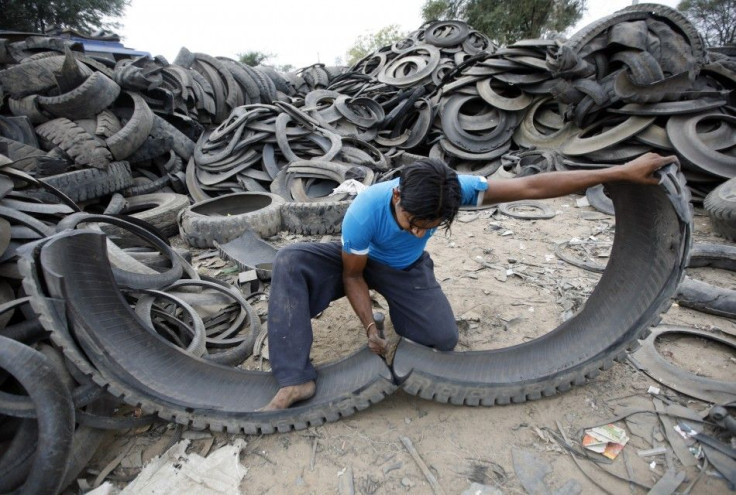India's Economy Troubled By Falling Growth And High Inflation
The Worrying Economic Situation Leaves The RBI In A Fix

Bad news from India isn't easing off just yet. Inflation hovers above 7 percent and economic growth remains tepid after plunging to a nine-year low of 5.3 percent in the first quarter, year on year.
The economic slowdown blended with disquieting inflation -- a level that is still beyond the comfort level of the Reserve Bank of India (RBI), the country's Central Bank -- gives little leeway for a huge cut in interest rates by the end of this year.
The combination is set to persist in the coming months, leaving room for only 50 basis points of rate cuts by year-end, Andrew Kenningham, senior global economist at Capital Economics, said in a research note.
Admittedly, inflation eased slightly to 7.3 percent, down from 7.5 percent in May, beating consensus expectations of 7.6 percent among Bloomberg and Capital Economics analysts. However, the hike in prices and fall in real incomes -- income levels adjusted for living costs -- have not dipped below the 7 percent threshold, a trend that makes the RBI churn with unease, economists say.
Through April and May, industrial production rose by less than 1 percent from the year before, as the production of capital goods dropped significantly.
The hike in primary food prices climbed to 10.8 percent last month, year-on-year, pushing consumer prices to a rate of more than 10 percent. Vexed with the persistent inflation, the RBI unexpectedly announced its decision to restrict credit flows for exports and leave its benchmark rate unchanged at 8 percent last month, disappointing markets and placing pressure on the ruling coalition government for fiscal action to save the flagging economy.
Even as rating agencies Fitch and Standard & Poors downgraded India's sovereign credit in April, citing corruption and inadequate government reforms, Delhi has been struggling to slash its costly subsidies on diesel or initiate other efforts to bridge its gaping budget deficits.
Falling global oil prices aren't expected to affect Indian consumers much because most energy prices, including diesel and cooking fuels are fixed by the government. However, the diesel and fuel subsidies cast an adverse impact on public finances.
Over the last 18 years, Delhi has not raised fuel prices sufficiently to cover the increase to its fuel subsidy costs, Kenningham said in an interview from London. So, they (the government) may increase prices this year. At the very least, they are unlikely to reduce them
Another worrying trend is the 24 percent fall in the Indian rupee against the dollar over the past year. This depreciation is expected to put an upward pressure on prices, overall. Even as the rupee falls, export orders fell to a negative rate of 0.5 percent through April and May, from 4.1 percent in the year-earlier period. Export data haven't been released for June. However, analyst reports suggest that exports could have shrunk further, year-on-year.
Meanwhile, economists are criticizing the RBI for the apparent lack of transparency and procedural discipline in its monetary decisions. The RBI is required to make up for the lack of an independent monetary committee to preside over decisions that affect the country's economy -- a double-edged sword that places more pressure on the bank.
Forecasting the timing of the RBI's interest rate decision and estimating a cut of 50 basis points has been difficult, Capital Economics said.
Some central banks are more transparent about what they are planning to do. But in India, it is the (RBI) governor who decides. What the deputy governors say isn't always consistent, Kennnigham said. There isn't a clear, transparent or easy process for people doing my job to follow.
The RBI will have its next meeting on July 31. Markets are waiting in anticipation for the central bank's policy on rate cuts.
© Copyright IBTimes 2024. All rights reserved.











